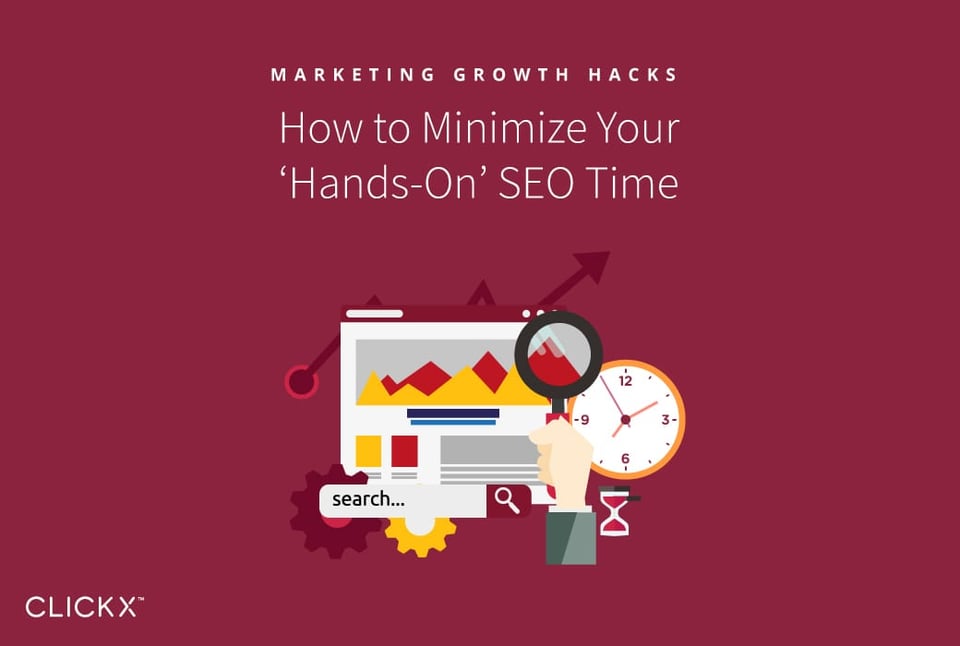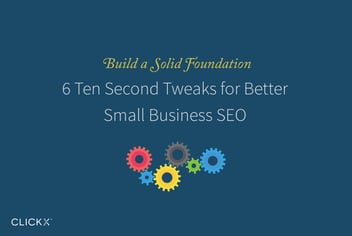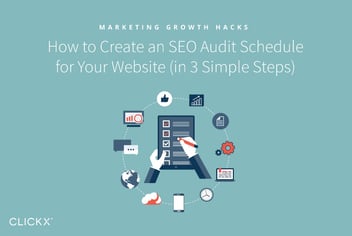How to Minimize Your ‘Hands-On’ SEO Time
If you’re running a business, there’s a good chance you wear many hats within the company. As such, it can be difficult to figure out how much time is necessary to maintain and improve your SEO efforts.
Of course, there’s no definitive answer when it comes to exactly how to spend your time, because your needs will be a little different to everyone else’s. However, you can take a well rounded approach to plotting out a schedule that works for both you and your business’ website.
It’s time to get started! Let’s jump right into how to minimize your SEO workload, before looking at organizing what’s left to fit your busy schedule.

Key Takeaways
- Your SEO strategy needs to address creating, optimizing, and updating content.
- Automation and outsourcing can significantly reduce the amount of hands on work it takes to manage an effective SEO strategy.
- Automation is run by scripts and bots, while outsourcing is done by other human beings.
Minimize Hands-On Work With Automation and Outsourcing
Collecting information and data about your website (or competitors’ websites) is something that can be automated with scripts and tools such as Google Analytics and the Clickx App. Before moving on, let’s take a moment to explore the differences between automation and outsourcing and how they can benefit you:
- Automation. A function that automatically tracks and collect data for search engine optimization purposes. For example, tracking high-traffic keywords can be done via Google Analytics.
- Outsourcing. This is hiring people to do the hands-on work you would otherwise have to do yourself. In this scenario, you might hire someone to write a blog post based on the keywords you found thanks to your automation efforts.
[Tweet “Automation and outsourcing are two ways to minimize your hands-on SEO tasks.”]
In other words, automation means less manpower and time required to collect highly accurate data to be used for SEO or market research. Meanwhile, outsourcing is an effective way to gain more manpower for managing and publishing a competitive content strategy.
As you can see, mixing and matching these techniques can significantly reduce the amount of time necessary for executing a successful search engine strategy for your business. This enables you to simply focus your energy on keeping that strategy on a roll.

How to Identify Automation and Outsourcing Opportunities
Now you understand the differences, you may have already reached the conclusion that it’s good to look for efficient ways to automate and outsource wherever possible. Different situations, of course, call for different techniques.
The technical component of data collection can usually be automated in one way or another. For example, web traffic can be tracked with analytics scripts. Additionally, backlinks can be discovered with bots through tools such as the Clickx App. Of course, it is still up to you to process the collected data and do something useful with it! For example, you could sort through the results to find keywords that lend themselves to featured snippets, or figure out how to target local neighborhoods with popular searches.
On the other hand, the creation of your content based on the automated data you’ve collected can often be outsourced. Of course, this varies depending on how much expert knowledge is required. If your unique industry know-how is needed in every article, you may need to be a little more hands-on during the writing process.
Create a Schedule That Meets Your Business’ Goals
There are a few critical stages when managing SEO for a business website. These are creating, optimizing, and updating content to meet inbound marketing goals. Let’s take a look at each:
- Creating content. This involves publishing authoritative content that’s keyword-rich and will earn quality backlinks.
- Optimizing content. In this context, optimizing means that the web page itself is formatted correctly so that search engines can parse the intended message (more on this in a minute).
- Updating content. This means going through your site to ensure your existing content is evergreen and reflects your business’ current goals.
[Tweet “Creating, optimizing, and updating content regularly are all part of the SEO cycle.”]
It all starts with collecting the necessary data—which is the part you can automate. This data will give you a solid base on which you can begin to build an overall content strategy. This is an ongoing process, and one that takes time and experimentation—so you’ll do well to let the scripts handle it.
Most of the real grind will involve identifying the right content to create, and how to make it work so those numbers look the way you’d like them to. That’s where creating a task schedule comes in.
How to Create an SEO Task Schedule
As usual, the best plan is the one you follow! Remember that plans are just guesses, so we recommend time-limiting your commitment to each element—something like three months will be sufficient. Then, re-evaluate whether you need to increase or decrease the amount of time spent on each stage.
[Tweet “The best SEO task schedule is the one that you stick to.”]
Firstly, choose how often to post brand new content. With so much content being produced, many professional bloggers find one to three times per week works well.
Next, choose a schedule for reviewing and optimizing your content for basic SEO-friendliness. This means going in and making sure your posts and pages all make good use of header tags, lists, and alternate text for images. It could be once per day, week, or month depending on your availability and how much content you have to work with.
Finally, pick a frequency for running thorough content audits, which provides you with the opportunity to adjust for new data and keyword analysis for the ever-changing needs of your business online.
This involves going through your archives and digging into the content to evaluate it for relevancy, accuracy, and the level of engagement based on a unique target keyword per page. If you have a huge website, this may mean systematically working through your entire site one page at a time on an ongoing, open-ended basis.

Conclusion
Your site’s SEO requires constant care and monitoring to stay relevant in search engine results. Falling behind on these tasks because you are so busy running your business can quickly negate your SEO investment. However, depending on your situation, you can choose your level of involvement.
In this piece, we’ve discussed how to minimize your hands-on SEO time, and you can determine exactly how hands-on you need to be by considering the following:
- How much of the work you can effectively automate or outsource.
- How to create a schedule for creating, optimizing, and updating content that meets the marketing needs of your business.
How hands-on are you currently with SEO, and how is it impacting your time? Let us know in the comments below!



